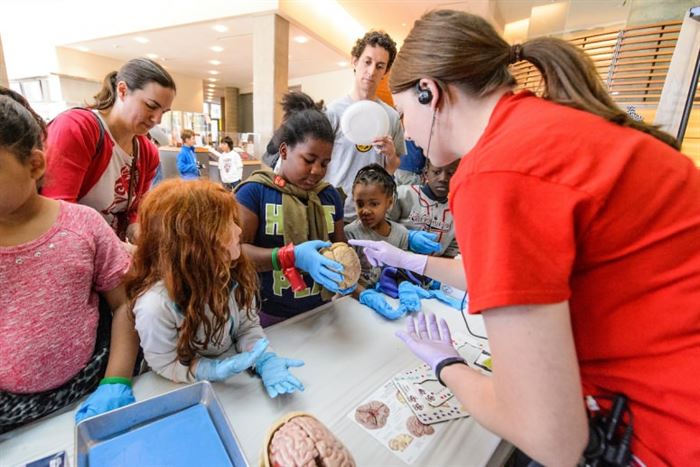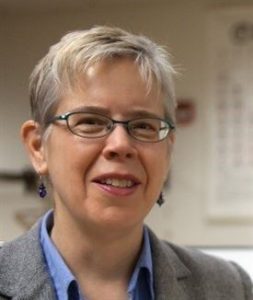10.23.17 | UW–Madison News | Eric Hamilton | Original Publication

From overcoming energetic barriers like a chemical reaction, to pollinating new ideas like a bee, Holly Walter Kerby can’t help but borrow scientific metaphors when talking about how to encourage scientists to speak out about their work.
It’s an expression of the similarities she sees between science and storytelling. She should know. With both chemistry and playwriting experience, Kerby is a natural choice to lead, with other communication experts, a new course for early-career scientists on communicating their work outside of the lab. The course, Illuminating Discovery, is organized by the Wisconsin Institute for Discovery (WID) and the Morgridge Institute for Research (MIR) and is designed to turn real research into engaging stories, visuals and presentations.
Adam Steinberg, who worked as a visual artist in the biochemistry department at the University of Wisconsin–Madison for 20 years, approached Wisconsin Alumni Research Foundation (WARF) director of programming Laura Heisler with the idea of a new science communication course earlier this year after seeing that many scientists thought communicating their work to the public was too difficult. Heisler connected him to Kerby and, together with WARF education and outreach manager Travis Tangen, they designed the 12-week, non-credit course for graduate students and postdoctoral researchers.

“We take kids in middle school and high school and say: ‘If you want to be a scientist you need to get rid of story, you need to tell fact and fact only,’” says Steinberg. “By telling honest, to the point stories, you engage people to want to learn.”
The course is targeted at graduate students and postdoctoral researchers, a group that Steinberg describes as having a “pent up demand” for additional training in effective communication. Job talks, conference presentations and grant proposals all rely on clear communication — and all benefit from a story-driven approach, says Kerby. The same techniques help researchers explain the value and excitement of their work to nonscientists.
“Story is about having something really cool you want to share with your audience, and then putting it in a context where that’s valuable and unknown. And then people go with you to find it out,” explains Kerby, who has developed a model of story design based on her work creating science outreach shows and writing plays. The first part of the course begins with Kerby teaching story building.
Steinberg, who is now a freelance scientific artist, will then teach about visual communication and effective data visualization. And in the final part of the course, Tangen will cover how to engage the public with presentations, with the help of physical models of research projects. These physical models help scientists step outside of literal meaning to get at the core of their work, says Steinberg, who points out that scientific conferences have lunches full of dishware standing in for cells and experiments as researchers share their work informally.
In another process familiar to scientists, the course will rely heavily on peer review, a bedrock of both scientific publishing and iterative story building.
In all, students will prepare several products, including short elevator pitches, a short thesis presentation, posters and talks for the public, to be held at venues such as Saturday Science in the Discovery Building or Wednesday Night at the Lab.
“One of the requirements is talking to the public,” says Steinberg.
Illuminating Discovery is sponsored by WID, MIR and WARF. The course begins Oct. 31, and interested researchers can contact Jessica Courtier for more information.